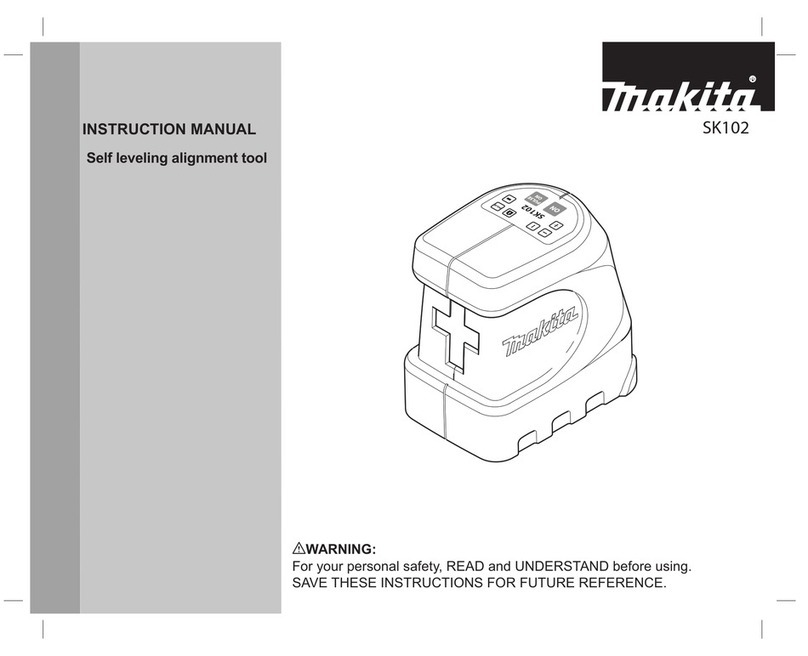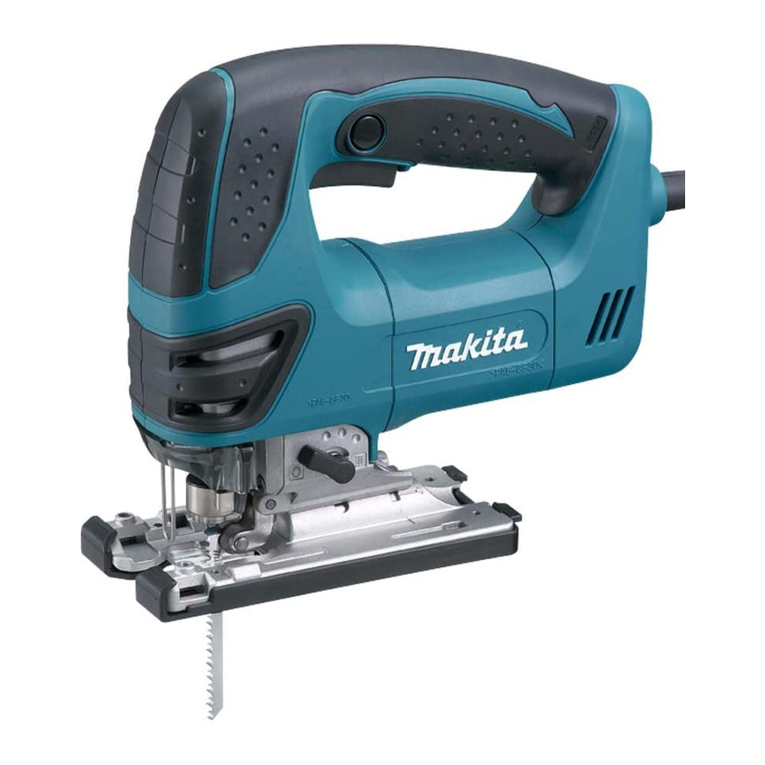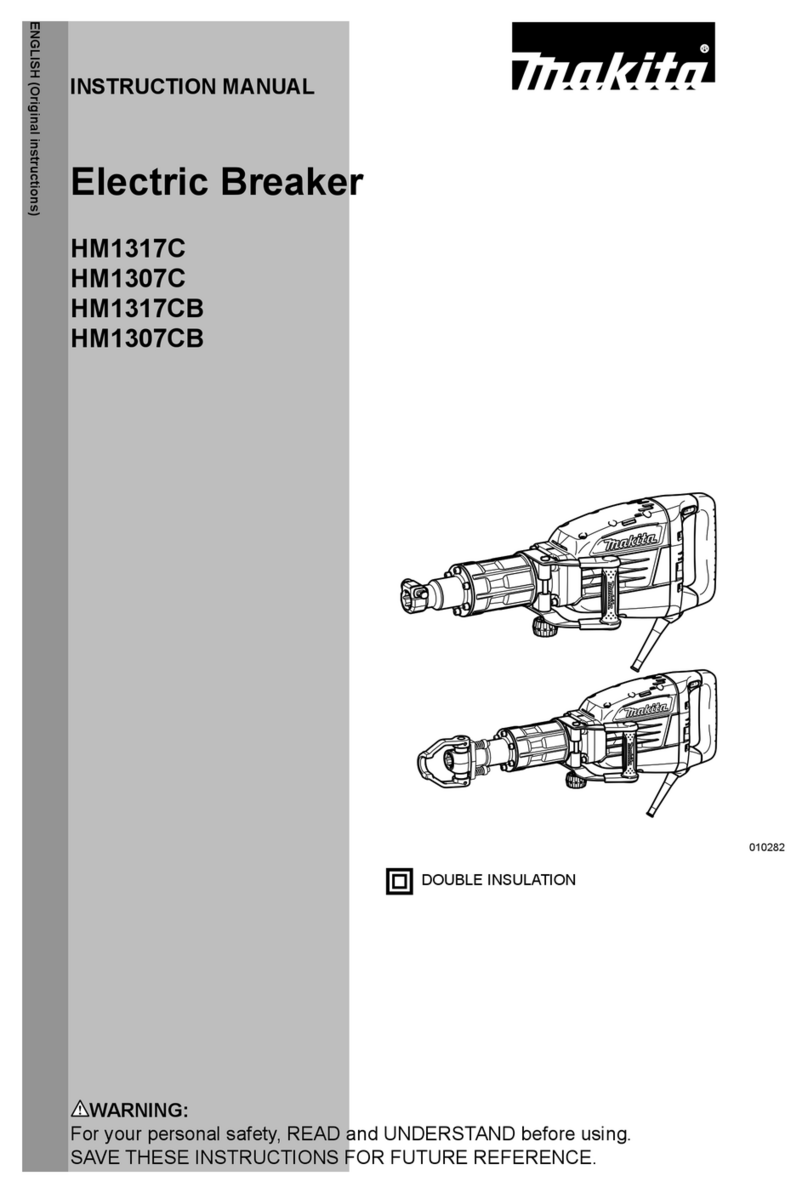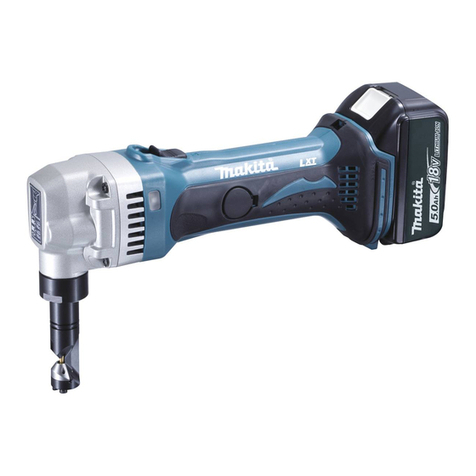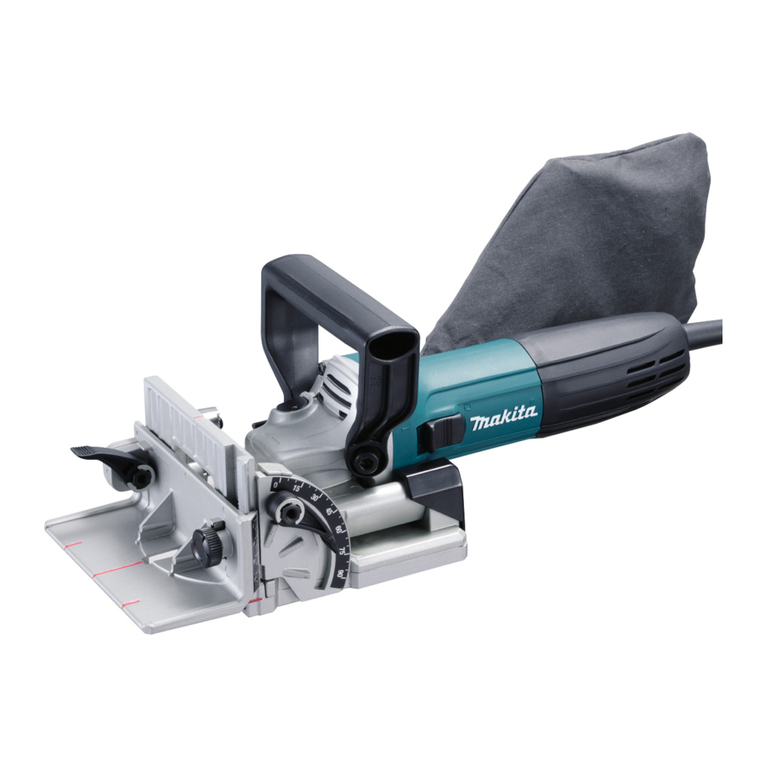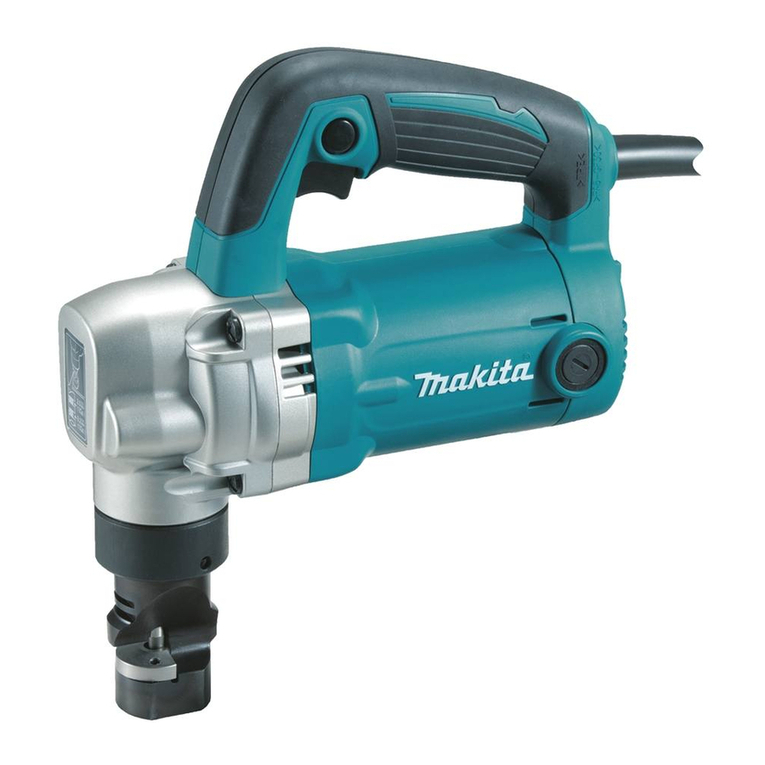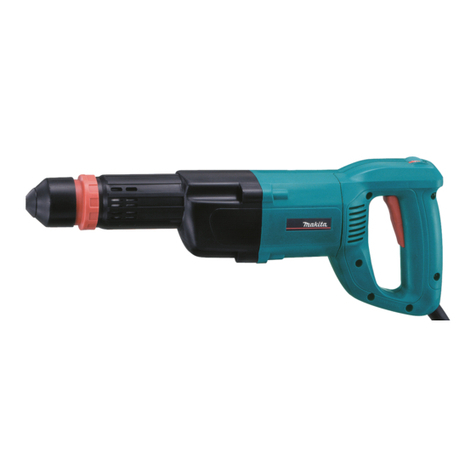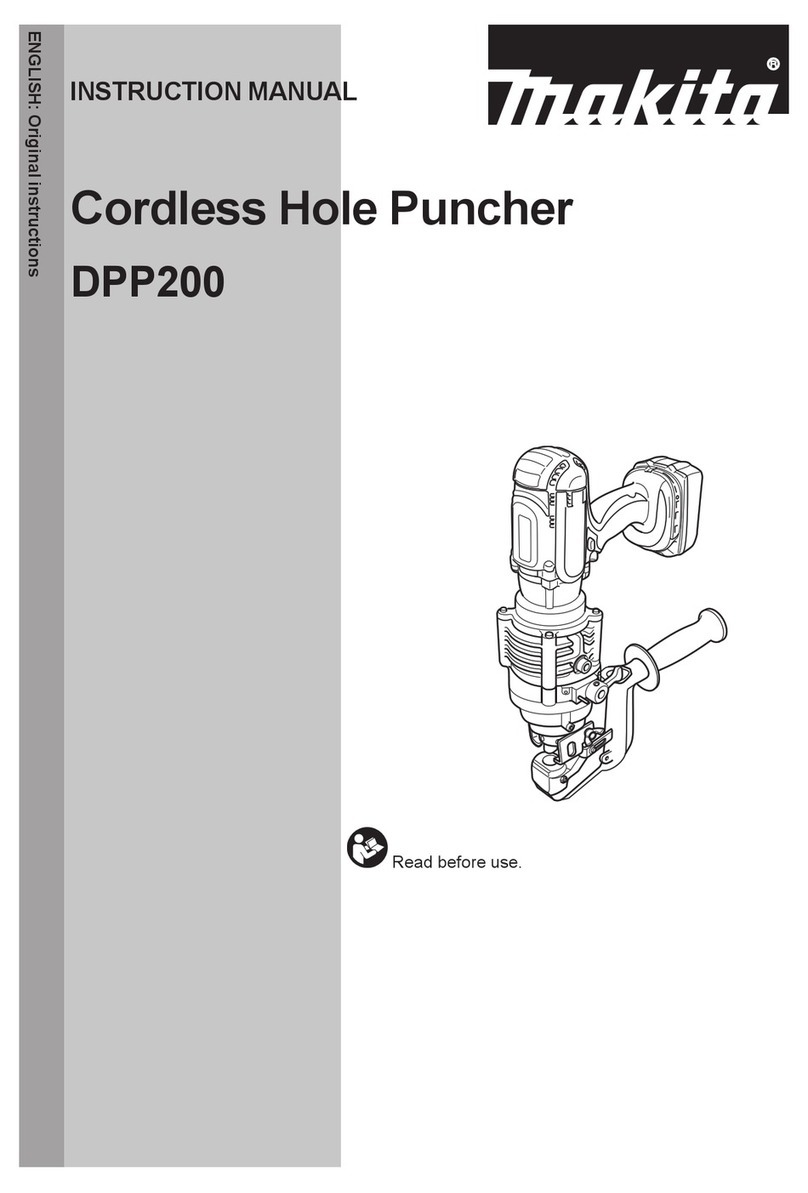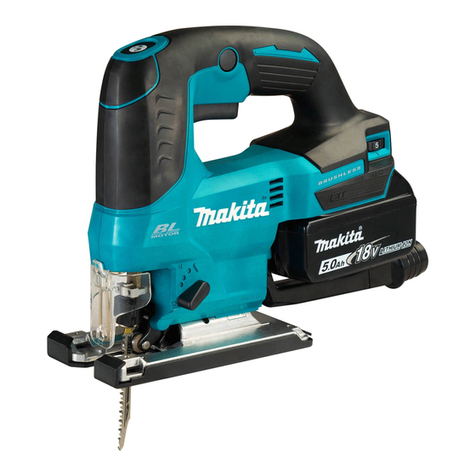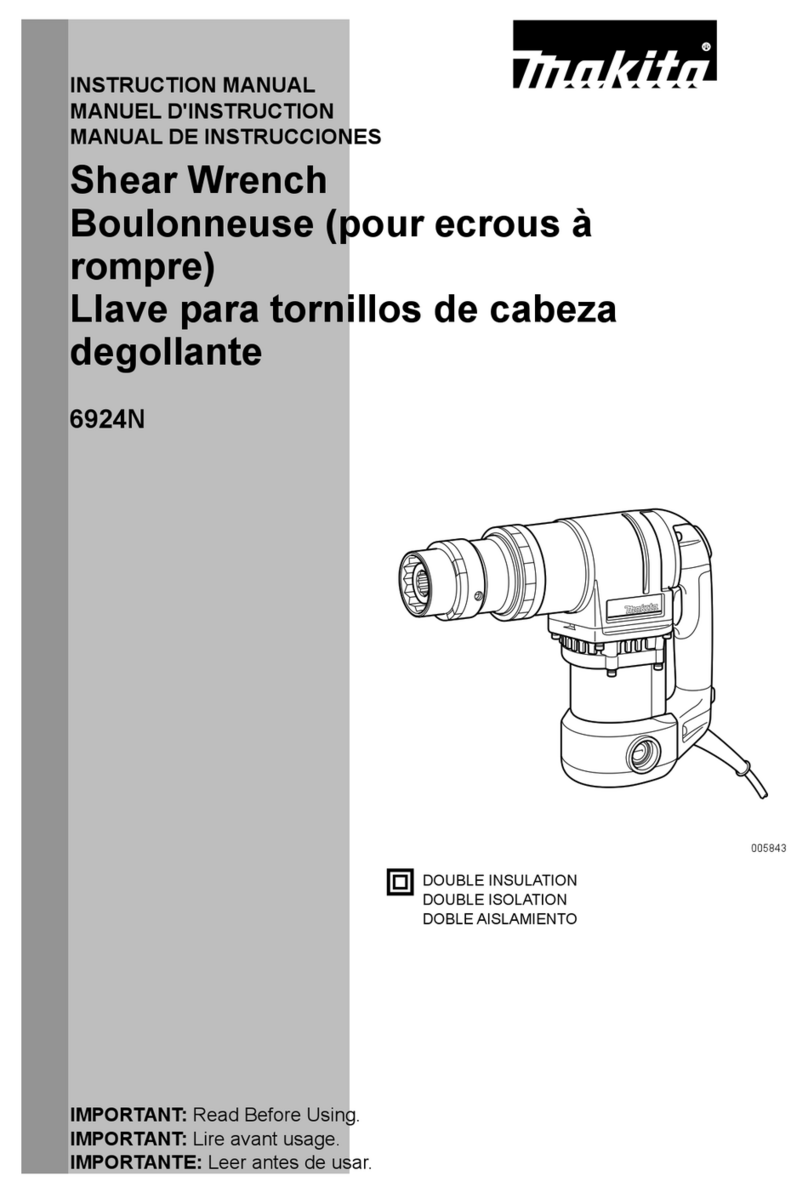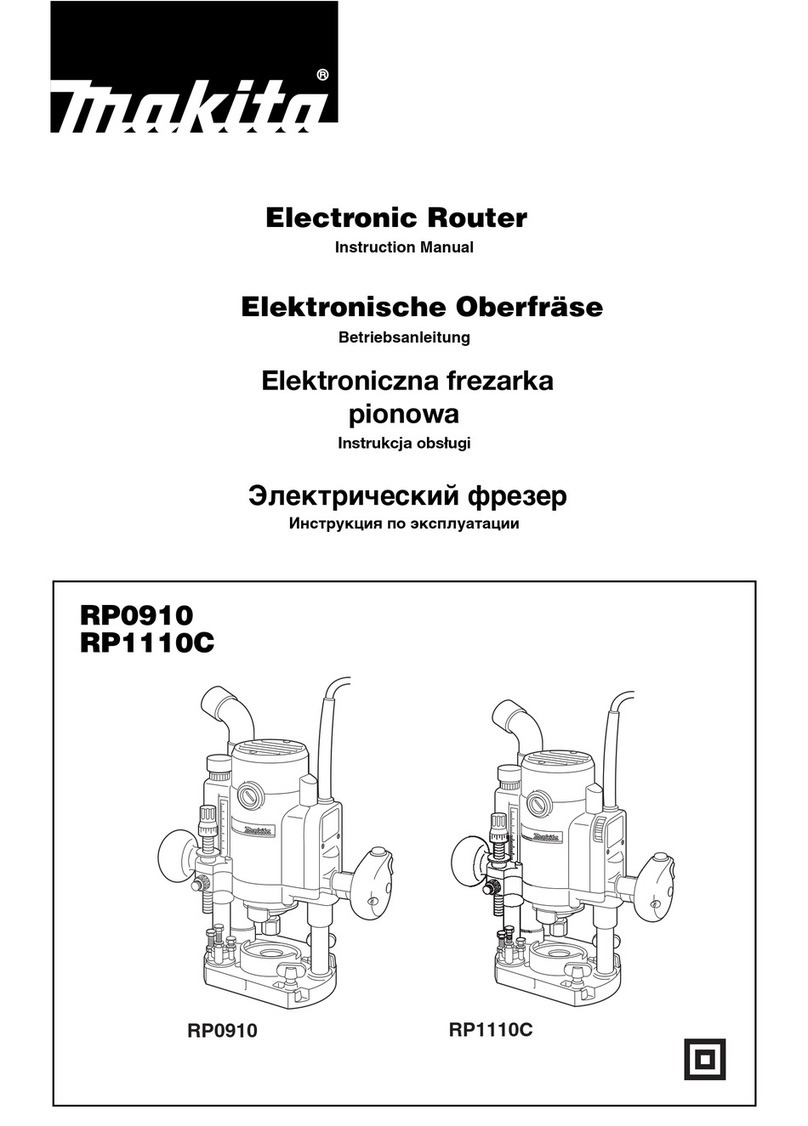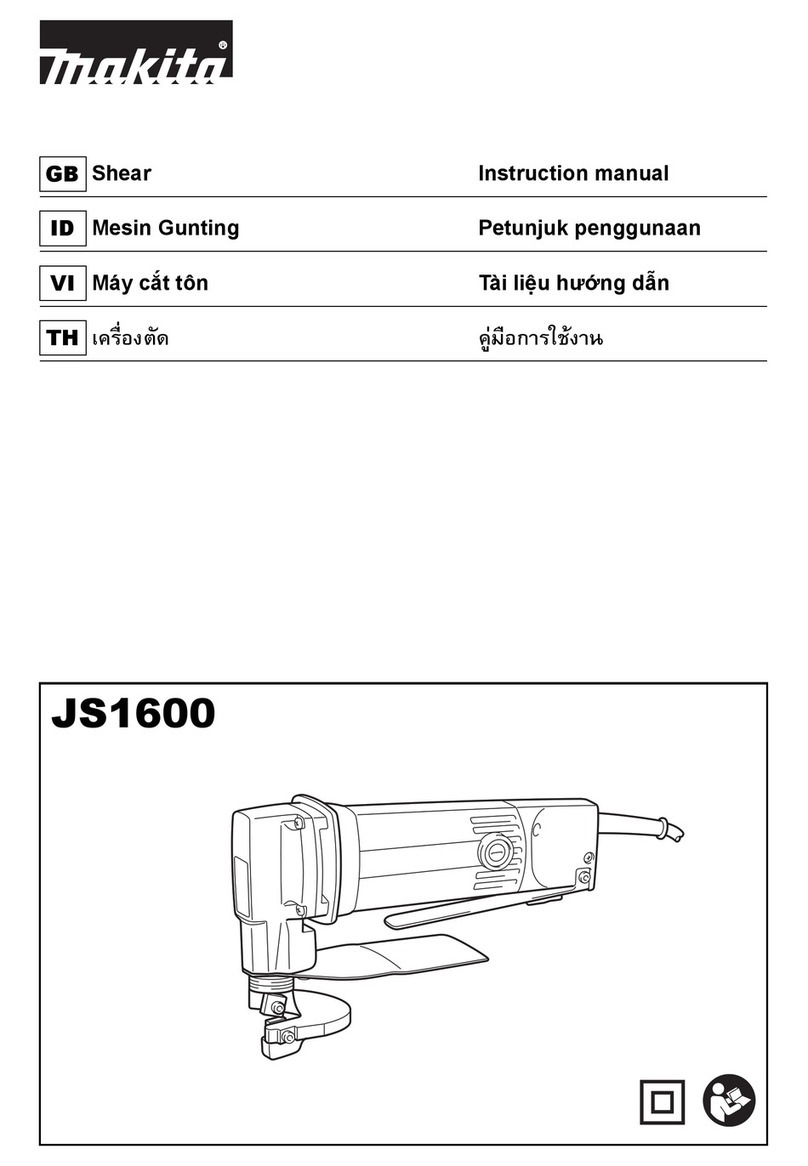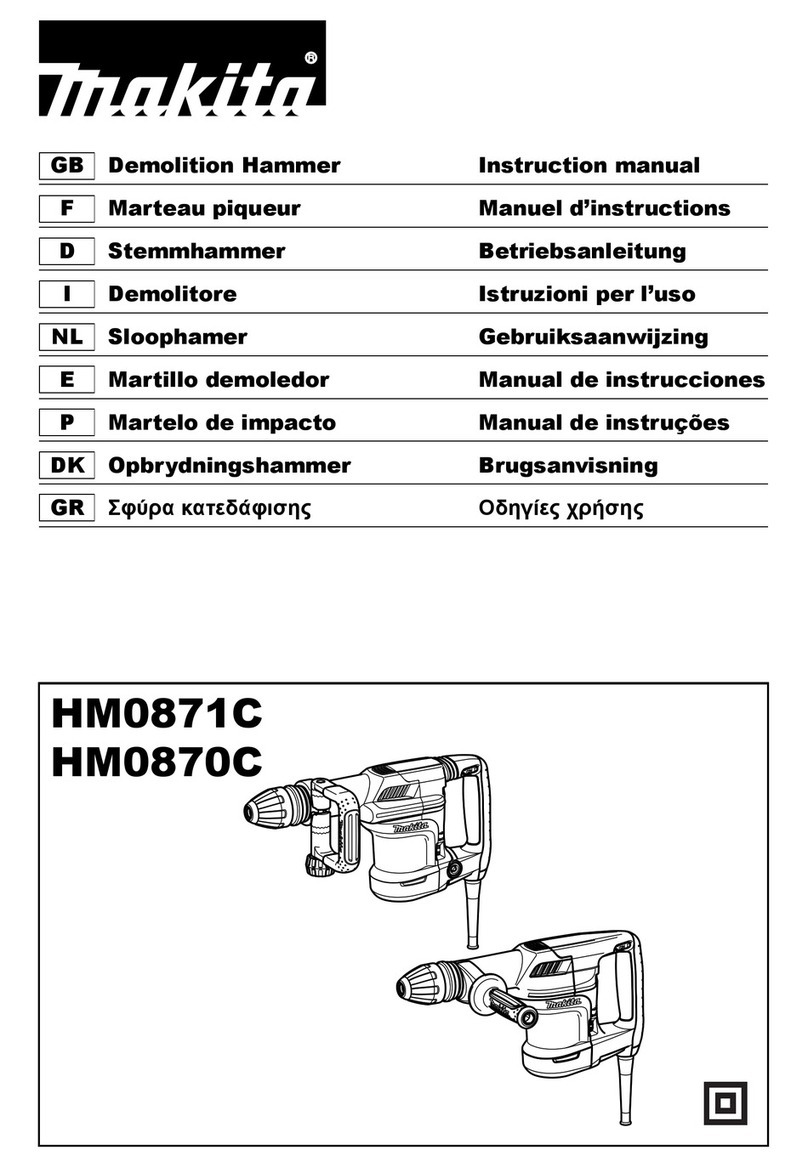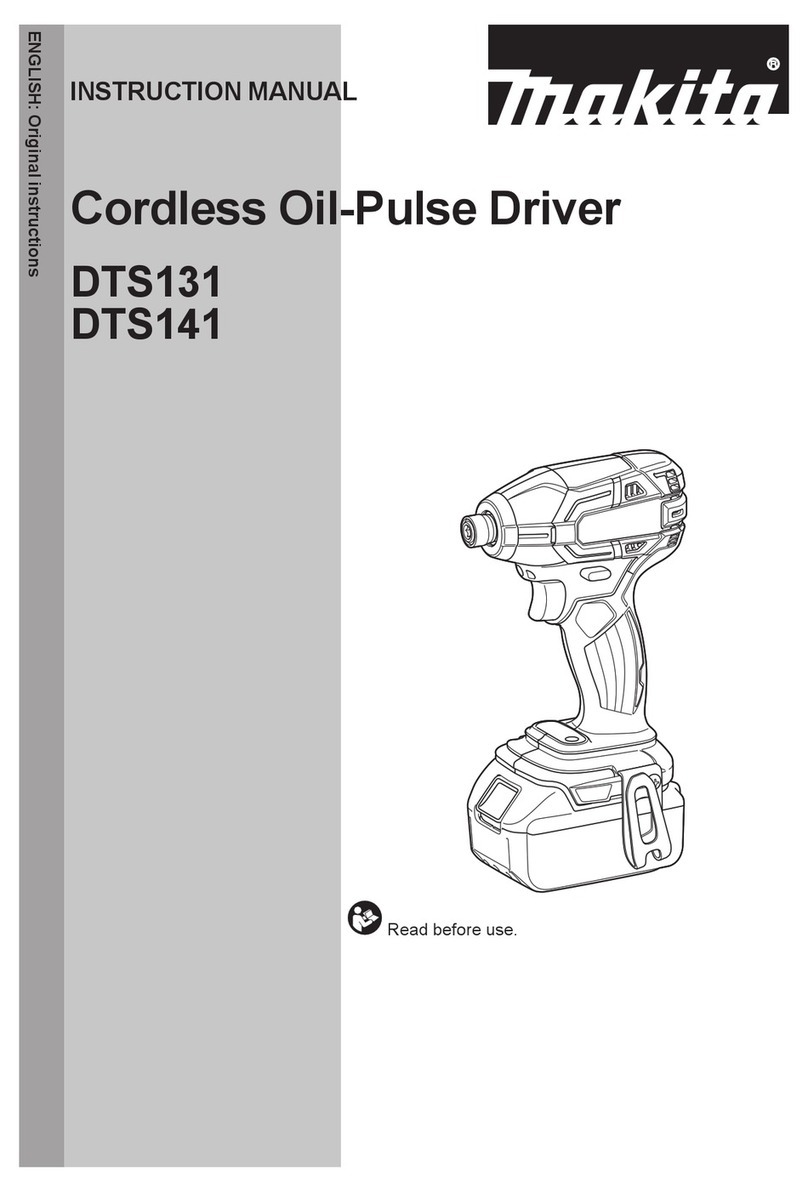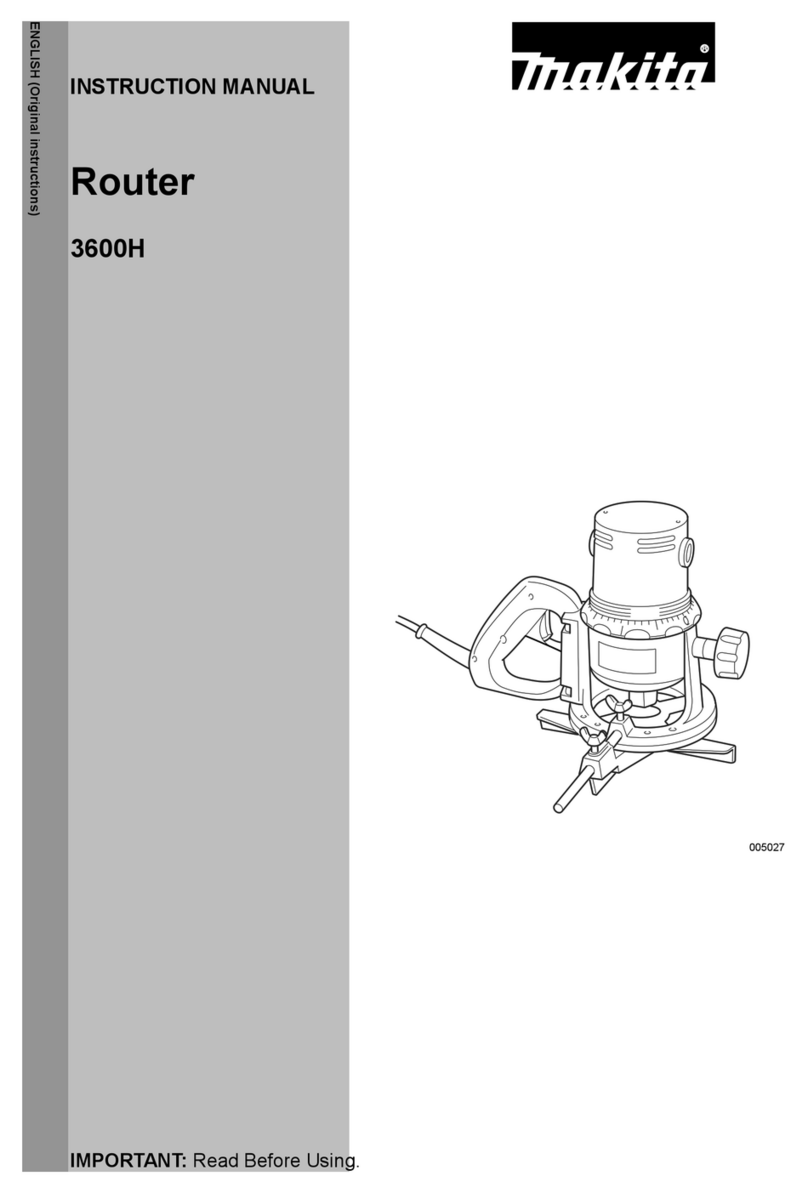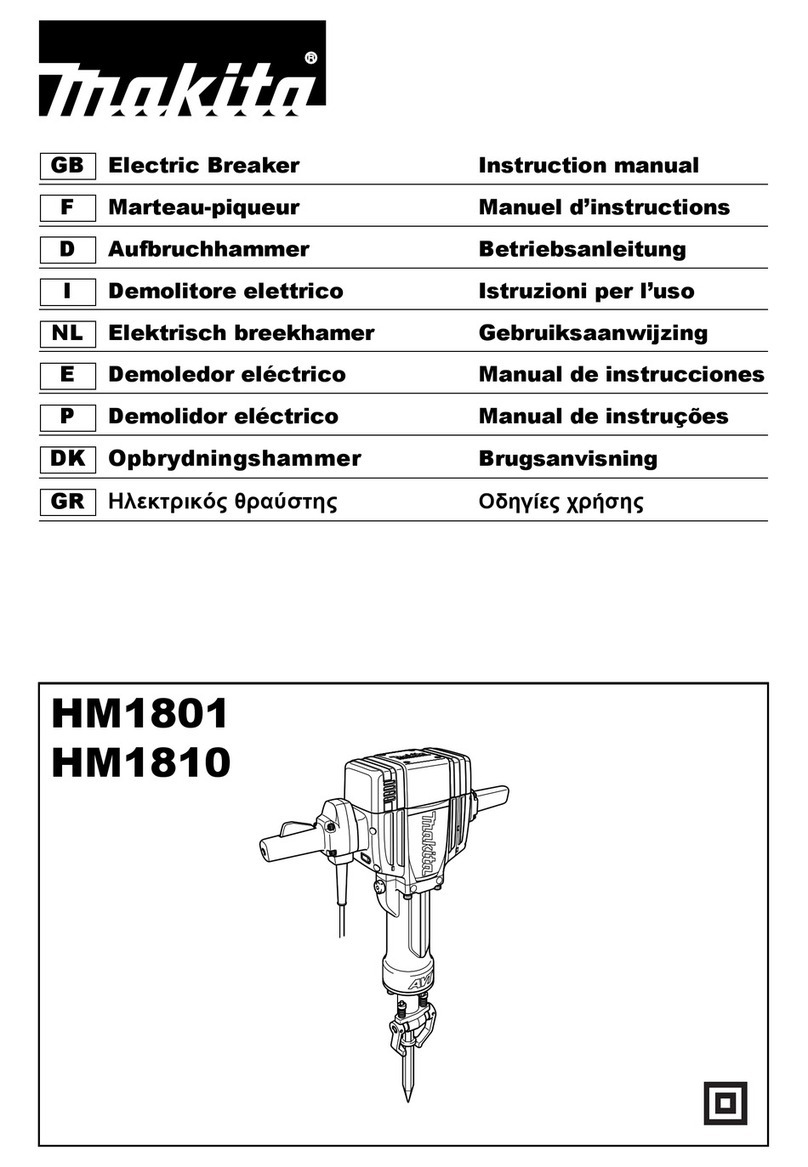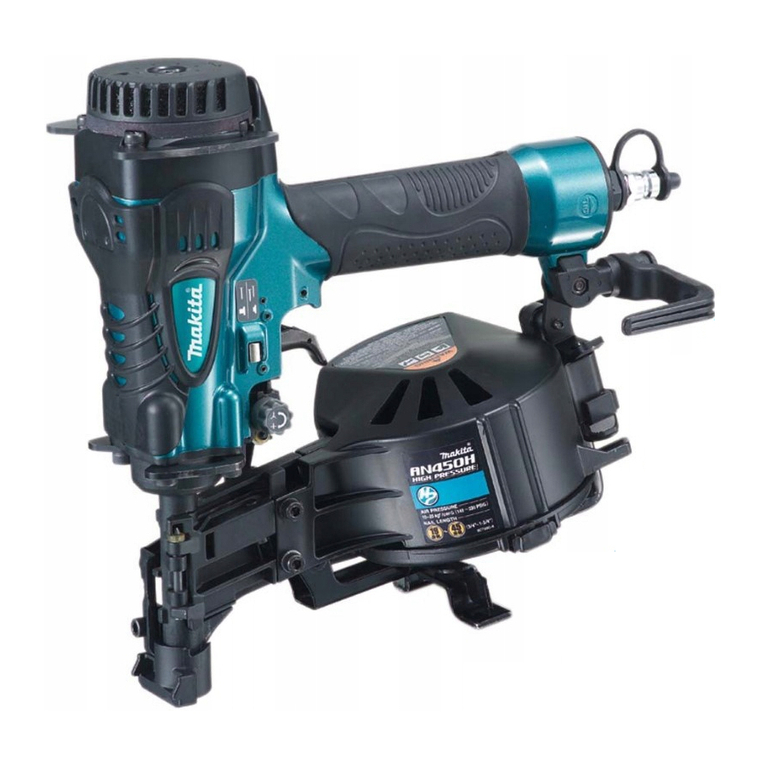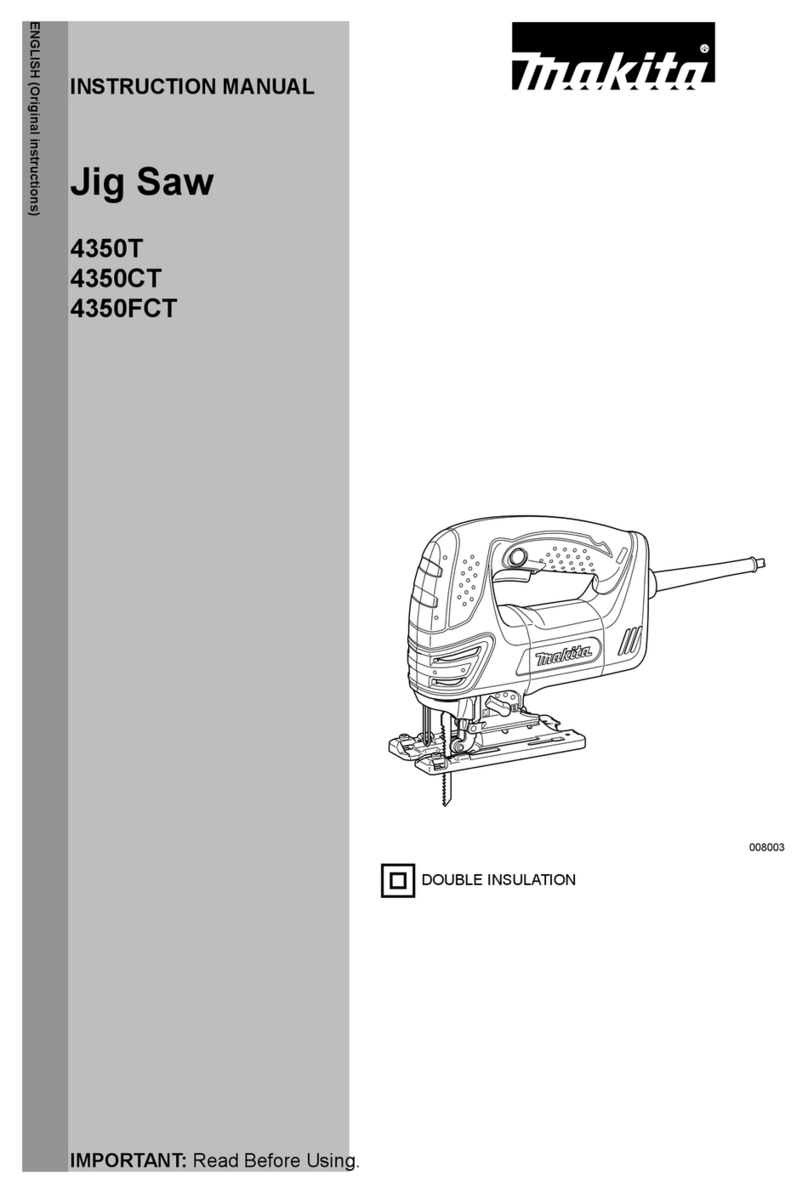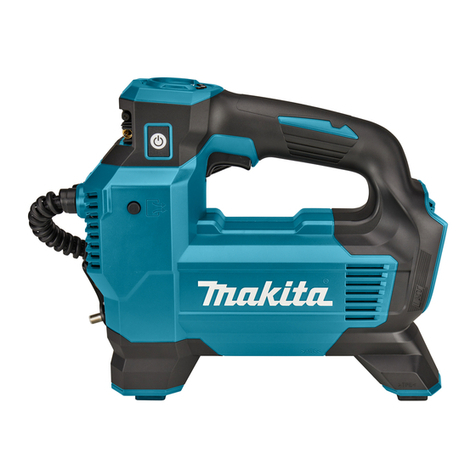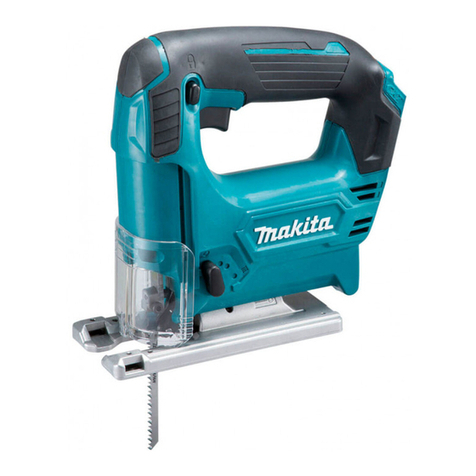
3ENGLISH
Persons removing paint should follow these guidelines:
1. Move the work piece outdoors. If this is not
possible, keep the work area well ventilated.
Open the windows and put an exhaust fan in
one of them. Be sure the fan is moving the air
from inside to outside.
2. Remove or cover any carpets, rugs, furniture,
clothing, cooking utensils and air ducts.
3.
Place drop cloths in the work area to catch any
paint chips or peelings. Wear protective cloth-
ing such as extra work shirts, overalls and hats.
4. Work in one room at a time. Furnishings
should be removed or placed in the center
of the room and covered. Work areas should
be sealed o from the rest of the dwelling by
sealing doorways with drop cloths.
5. Children, pregnant or potentially pregnant
women and nursing mothers should not be
present in the work area until the work is done
and all clean up is complete.
6. Wear a dust respirator mask or a dual lter
(dust and fume) respirator mask which has
been approved by the Occupational Safety and
Health Administration (OSHA), the National
Institute of Safety and Health (NIOSH), or the
United States Bureau of Mines. These masks
and replaceable lters are readily available
at major hardware stores. Be sure the mask
ts. Beards and facial hair may keep masks
from sealing properly. Change lters often.
DISPOSABLE PAPER MASKS ARE
NOT ADEQUATE.
7. Use caution when operating the heat gun.
Keep the heat gun moving as excessive heat
will generate fumes which can be inhaled by
the operator.
8. Keep food and drink out of the work area.
Wash hands, arms and face and rinse mouth
before eating or drinking. Do not smoke or
chew gum or tobacco in the work area.
9. Clean up all removed paint and dust by wet
mopping the oors. Use a wet cloth to clean all
walls, sills and any other surface where paint
or dust is clinging. DO NOT SWEEP, DRY DUST
OR VACUUM. Use a high phosphate detergent
or trisodium phosphate (TSP) to wash and
mop areas.
10.
At the end of each work session put the paint
chips and debris in a double plastic bag, close it
with tape or twist ties and dispose of properly.
11. Remove protective clothing and work shoes in
the work area to avoid carrying dust into the
rest of the dwelling. Wash work clothes sep-
arately. Wipe shoes o with a wet rag that is
then washed with the work clothes. Wash hair
and body thoroughly with soap and water.
SAVE THESE INSTRUCTIONS
• A battery shall be recharged only with the
specied charger for the battery. Acharger that
may be suitable for one type of battery may create
a risk of re when used with another battery.
• Use battery operated heat gun only with spe-
cically designed battery pack. Use of any other
batteries may create a risk of re.
• When battery pack is not in use, keep it away
from other metal objects like: paper, clips,
coins, keys, nails, screws, or other small metal
objects that can make a connection from one
terminal to another. Shorting the battery termi-
nals together may cause sparks, burns or a re.
• Do not incinerate this heat gun even if it is
severely damaged. The batteries can explode in
a re.
• This appliance is not intended for use by per-
sons (including children) with reduced phys-
ical, sensory or mental capabilities, or lack of
experience and knowledge, unless they have
been given supervision or instruction concern-
ing use of the appliance by a person responsi-
ble for their safety.
Children should be supervised to ensure that
they do not play with the appliance.
• Be careful when using the appliance in places
where there are combustible materials;
— be aware that heat may be conducted
to combustible materials that are out of
sight;
—
when working in these locations, keep
the heat gun moving in a back-and-forth
motion. Lingering or pausing in one spot
could ignite the panel or the material behind it.
• Do not expose power tools to rain or wet con-
ditions. Water entering a power tool will increase
the risk of electric shock.
• Do not overreach. Keep proper footing and
balance at all times. This enables better control
of the power tool in unexpected situations.
• Do not apply to the same place for a long time.
Cordless heat gun safety warnings
1. Misuse of the heat gun could cause risk of re.
2. Do not use this tool as a hair dryer.
3. Never leave the heat gun unattended when it is
running.
4. Do not use the heat gun in humid, ammable,
or explosive environment.
5. Check the work area before operation. Do not
use the tool if safety is not conrmed.
6. Keep the work area sucient air ventilation.
Poisonous smoke may be generated when work-
ing with some materials.
7. While the heat gun is running or shortly after
the heat gun is turned o, do not touch the
nozzle or accessory attached to the nozzle as
it has become very hot. Wait until the nozzle or
accessory is cooled down completely.
8. Do not look down into the nozzle of the heat
gun when it is running.
9. Do not allow the hot nozzle of the heat gun
touch any object or material that is ammable
or easily melted or damaged by heat when the
heat gun is running or shortly after turning o.
10. When installing or removing the nozzle, allow
the nozzle to cool suciently.
11. After use, allow the tool to stand on its own
or place the heating nozzle upward before
cooling.
